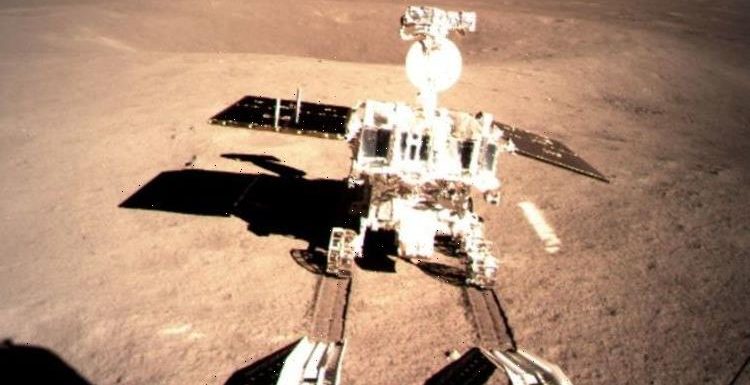
China: State TV appears to show Chang’e 5’s moon landing
We use your sign-up to provide content in ways you’ve consented to and to improve our understanding of you. This may include adverts from us and 3rd parties based on our understanding. You can unsubscribe at any time. More info
The probe is one of the spacecrafts from last year’s lunar sample return mission of the same name. It had brought Moon rocks to Earth, and then went back out towards Langrage Point, which is where the gravitational pull from Earth and the Sun are equal but opposite. It is roughly 1.5 million kilometres away from the Earth had been there since March.
The spacecraft was said to be carrying out tests to do with orbit control and observations of the Earth and Sun.
But after staying there for six months, the probe appears to have turned back and is set to arrive at the Moon by Thursday morning in what is called a Lunar flyby.
It is being controlled by the Beijing Aerospace Flight Control Center (BACC), making it responsible for telemetry, tracking and complete command of space probe.
There are a number of explanations for this latest unfolding, but as there has not been any official announcement or update from the BACC, the spacecraft is becoming a topic of speculative discussion among experts.


Some ideas have speculated that it is either entering lunar orbit, heading for another Sun-Earth Lagrange Point or an Earth-Moon Lagrange Point.
It is also possible that the spacecraft could be using the flyby to set Chang’e-5 on a trajectory to flyby 469219 Kamoʻoalewa, a quasi-satellite of Earth and the goal for China’s near-Earth asteroid sample-return mission.
But Beijing has been warned as experts say it’s almost certainly running out of fuel.
China is also planning a follow-up mission for a lunar sample return from Chang’e-6, in 2024 which is will be part of the joint China-Russia International Lunar Research Station.

It comes after Chang’e-5 spacecraft system chief designer Jing Peng of the China Academy of Space Technology spoke at the Global Space Exploration (GLEX) conference in St. Petersburg.
He said “I don’t think there will be many opportunities for the orbiter to perform more complex orbit manoeuvres with other bodies.
“I think it will stay in [the Lagrange point] or the Earth-moon system.”
China’s Chang’e-5 lander had collected lunar samples from near Mons Rümker, a volcanic formation on the near side of the Moon.
DON’T MISS
Alzheimer’s breakthrough with new algorithm [INSIGHT]
Arthritis breakthrough: Study finds key new cause and treatment [STUDY]
Dementia: The ‘first’ symptom of dementia may not be memory loss [REVEAL]


The samples are currently being analysed.
Applications for sample materials are have been made open to domestic and international institutions.
At the moment, NASA does not have any plans to trade any of its Apollo-era lunar samples with lunar samples returned by China’s Chang’e-5 mission, although NASA’s chief scientist Jim Green has said he is interested in looking into an exchange like this at some point in the future.
Source: Read Full Article